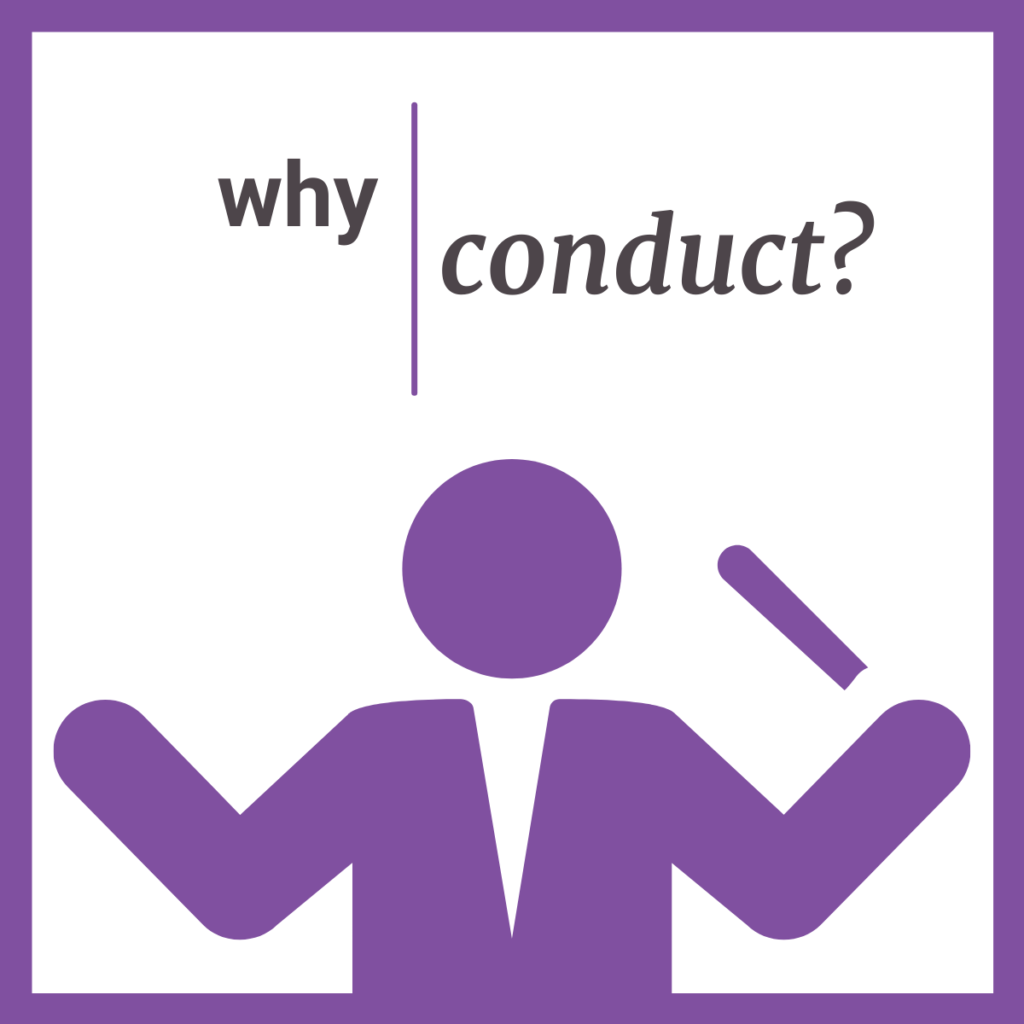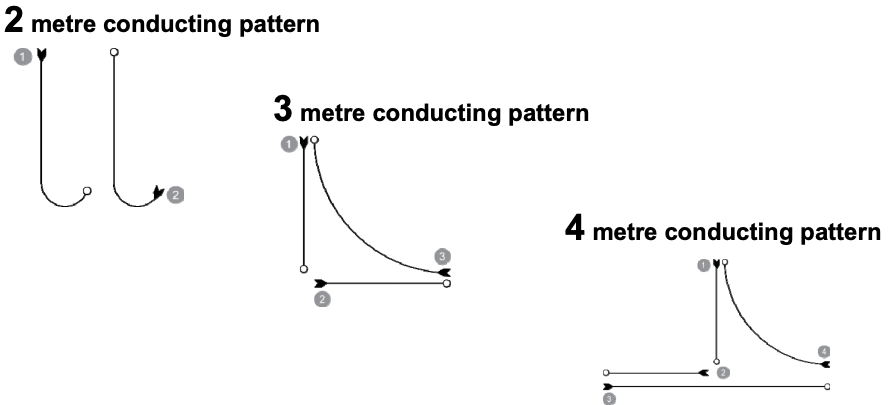Why Conducting is Key!
Comments Off on Why Conducting is Key!
Although the act of conducting typically applies to a person who directs a group of other musicians in a unified and expressively-intentional way, the patterns and movement can also be used to strengthen our own individual musical comprehension.
This is because conducting is functional beat! That means you’re consciously aware of what rhythms you’re reading on which beats of the bar.
Using our right hand, we can trace shapes in the air that indicate each beat in the bar with motions in different directions. A downbeat, which occurs on the first beat of a bar has a downward motion. The upbeat on the last beat of a bar (or before the very first beat of a piece), moves upward. The point where the beat occurs in these movements is the ictus.
What are the learning benefits of conducting?
- it demonstrates how many beats are in each bar and where (first, second, last beat of the bar etc.) the beats are
- conducting allows us to physically demonstrate the beat while we read or sing Rhythm Names
- it fosters greater understanding of rhythm, metre, tempo and beat, as well as rhythmic groupings and the concept of subdivision or pulse
- conducting builds physical or kinaesthetic skills and coordination
- it helps you understand the rhythmic feel of music, as opposed to a metronome that just ticks in time with the beat
- conducting patterns also help internalise the stronger and weaker beats in the bar (the downbeat in 2 metre is more pronounced than the upbeat, for instance)
- the patterns strengthen understanding of less common time signatures and syncopation
- as conducting is functional beat it’s a vital way to prepare for rhythmic transcriptions
View videos for the 2 metre conducting pattern, as well as the 3 metre and 4 metre conducting patterns.
For the 5 metre conducting pattern, visit the Classic FM website here.
Example from page 2 of the Musicianship & Aural Training for the Secondary School Level 2 books:

Important note
Regardless of whether you are right or left handed, try to use your right hand when conducting the patterns above. This is what regular conductors do and it also helps make sure your upbeat motions are clear. However, if you are a teacher at the front of your class, your students may find it easier to mirror you if you use your left hand.
Being able to conduct as a learning aid is just like singing. You don’t have to be a great conductor of other musicians or a terrific singer, you just need to be able to demonstrate beat and tempo.
Important note
The act of conducting has existed since at least the Middle Ages. Hand gestures were used to show melodic shape for choral music in an early and very basic version of this called cheironomy. There was even a precursor to the baton during this time. The “conductor” held a staff which was moved up and down to demonstrate the beat.
Famously, composer Jean-Baptiste Lully injured his foot with one of these large staffs. Lully, who refused amputation of his eventually gangrenous leg, died two months afterwards. Although the baton is widely used today, for the purposes of your practice, hand motions will be fine!
Happy conducting! – Deb


Comments are closed